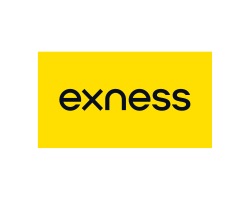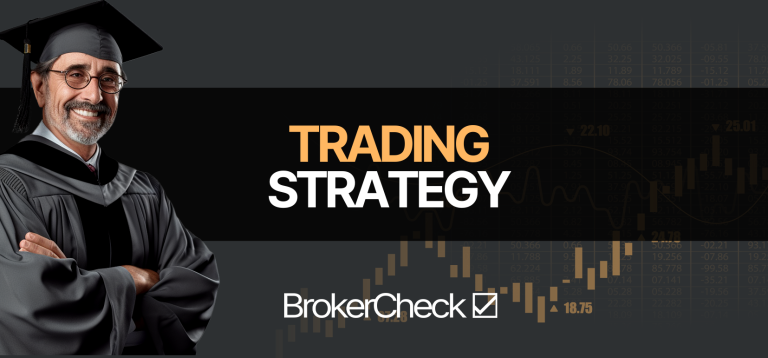Stock ratios: the most important figures for fundamental analysis
The ratios in trading offer you important indications of which stocks have potential and which do not. They are used above all in fundamental analysis. In this method, you look at the intrinsic value of companies and try to find out whether they are making stable profits and have a positive forecast.
Then you compare the share ratios with the stock market. What is the valuation by investors and is it fair or justified compared to the actual potential? Among other things, you can compare the profit, the book value and the turnover with the current price. In this way, you come to possible undervaluation or overvaluations. It is especially the value and growth investors who use this kind of stock analysis for themselves.
The most important ratios for shares that you should know are:
- Company profit and earnings per share
- Book value per share
- Turnover per share
- Cash flow
- Profitability
- Price-earnings ratio (P/E ratio)
- Price-to-book ratio (P/B ratio)
- Price-to-sales ratio
- Price-to-cash-flow ratio
- Price-earnings-growth ratio
- Enterprise Value
- Dividend/Dividend yield
- Yield
- Beta factor
The intrinsic value: company profit, book value, turnover and cash flow per share
The intrinsic value of companies is, so to speak, the financial data resulting from the economic activity within one year. For traders, the main focus is on profits. This is published quarterly and summarised at the end of the year. This then results in the important earnings per share, which are used to calculate other key figures. However, the company’s profit is not the only parameter that is relevant for the intrinsic value of the company. So you should also pay attention to the pure turnover and the cash flow in your share analysis. The latter describes the liquid cash flows, i.e. the inflows and outflows without fictitious values.
What is not liquid is usually firmly cast in tangible assets and real estate. Of course, these also have a value that should not be disregarded. The book value records all these variables apart from borrowed capital. It gives you an indication of how many assets the company still has up its sleeve.
Profit/earnings per share
To calculate the company’s earnings per share, take the official end-of-year result from the balance sheet and divide it by the number of shares. This way you break down the official annual profit to the individual share and know exactly how much this paper is actually worth. Later, you can compare the share’s intrinsic profit with its price and thus conclude its undiscovered potential.
Turnover/Sales per share
Turnover is the pure income of the company. Since operating expenses are not included here, this ratio is significantly higher than the profit. A look at this value is particularly interesting for companies that are still young and very willing to invest.
Due to the high expenditures for new acquisitions and the development of innovative ideas, the profit itself is often quite low. The price-earnings ratio could indicate a massive overvaluation here. Turnover, on the other hand, shows how successfully the company is actually selling in the market. It is possible that the products or services are extremely popular and have future prospects that are not yet reflected in the profit itself.
Cash flow/cash flow per share
The word cash flow or cash flow can simply be translated as cash flow. One wants to use this ratio to find out how liquid the group is. Can money be made liquid and used very quickly or do reserves, tangible assets and real estate first have to be liquidated over a long period of time?
In contrast to profit, cash flow better reflects reality. It cannot include fictitious expenses such as provisions or depreciation. You are therefore looking at the actual earning power of the company. This can either be positive and used for investments or turn out to be a deficit.
Book value/book value per share
The book value includes everything that the equity capital yields. This means that it includes not only the profits, but all tangible assets and real estate of the company. You can recognise the complete assets from this and use it to estimate what values are really in the group. Especially in the case of growth companies, these are difficult to recognise in the profit.
The book value broken down to the share is advantageous, not least for the assessment of boom markets. Is an extremely high share price despite low profits a potential stock bubble or growth stocks? During the dotcom bubble, it was often clear from the low book values and narrow investments where certain companies were heading.
However, many investors at the time were so lured by the soaring equity valuations in the market that they lost sight of the actual financials and fell into the equity bubble trap. A holistic valuation with all important key figures and data is therefore the be-all and end-all of a thorough analysis.
How should enterprise value be assessed?
In economics, one likes to work with the enterprise value in order to correctly assess the health and future opportunities of companies. A basic distinction is made between enterprise value/firm value including all sources of capital and adjusted equity value excluding debt capital.
What the company is worth to the market on the basis of the internal ratios is derived from the assets required for operations and the assets not required for operations. These items together result in the firm or entity value.
Generally, the enterprise value is calculated by adding up equity and debt capital, from which the non-operating assets are then deducted. This key figure is ultimately used to compare the operating values and the results on the stock markets in order to identify possible under- and overvaluations.
Comparison with stock market valuation: P/E ratio, P/B ratio
First of all, the intrinsic values of companies provide you with important information about the finances themselves. In share trading, however, you also want to find out whether this information corresponds to the share valuation on the stock exchange. Often, for various reasons, there is a glaring discrepancy between the prices. Such discrepancies offer clever investors the best opportunities to get in on various trends – even before they are recognised by other shareholders.
Price-earnings ratio
For value shareholders and fundamental analysts, the price-earnings ratio (P/E ratio) is by far the most important ratio. By means of this ratio, in short, you compare the intrinsic value in the form of the annual profit with the valuation of the share on the market. To do this, you first have to break down the company’s profit to a share by dividing it by the number of outstanding shares.
Next, divide the current share price by the earnings per share. So the formula for the calculation is:
P/E = share price / earnings per share.
You must now interpret the resulting ratio correctly. In general, you can say that a small P/E ratio around 15 points and below indicates an undervaluation. However, in some sectors the earnings may be generally higher because the profit itself may not yet be so strong in this segment.
Accordingly, you always have to look at the P/E ratio in context with the other companies. Overall, you can use the P/E ratio to identify, among other things, value stocks, i.e. securities for which the valuation on the stock market is far below their potential and earnings power. In addition, you can recognise earlier whether there is a possible overvaluation with the risk of a stock bubble. In this case, you should possibly refrain from investing in the stock corporation.
Price-to-book ratio
In the case of profit, you initially only look at the income of the public limited company set off against the expenses. This does not show how much money has gone into the inventory and real estate, for example. Due to investments, the information from the P/E ratio can therefore deceive you and the financial values of the company are better than one would assume at first glance.
Therefore, smart investors always consult the price-to-book ratio (P/B ratio) when valuing shares. They look at the book value and divide the price by this ratio. In this way you relate the current price of securities on the market to the total equity.
P/B = Share price / Book value
The equity or book value is typically higher than the profit. It thus includes, among other things, all tangible assets and real estate. Therefore, the net P/B ratio is also lower than the P/E ratio. This makes the valuation and assessment easier to some extent. You only pay attention to whether the ratio is above or below 1.
If the price-to-book ratio (P/B) is below 1, this suggests an undervaluation. If it is higher, you might assume an overvaluation. The P/B ratio is particularly practical for companies that are in a boom market whose valuations are hardly covered by current profits. Many companies in these sectors thus have hardly any inventory and real estate, but only a rough business idea. The book value is correspondingly low and the P/B ratio very high.
If other key figures such as the P/E ratio and the KCV show similar results, investors should rather refrain from buying and possibly exit the trade in good time.
Price-turnover ratio
A rather seldom used value, which can, however, offer help in a holistic view when deciding for or against a purchase, is the price-turnover ratio. In this case, you disregard the company’s expenses. You only look at the income, i.e. the turnover of the last year.
This shows you how well the company’s products or services are selling. This can be an excellent indication of possible growth. Perhaps the company is in the start-up phase, has created a popular offer, but at the same time needs to invest in order to move forward. These investments automatically reduce profits and the share price may appear unjustifiably overvalued.
The turnover and the price / turnover ratio (P/S ratio) thus brings some clarification and creates a better insight into the actual development of the company. You can also look at the figures from previous years to see if turnover is growing, how popular the share is with investors and what investments there have been recently.
Similar to the book value, the turnover is significantly higher than the profit. Thus, the ratios for the division are correspondingly lower than for the P/E ratio and can be interpreted somewhat more clearly. In general, one can say that a P/E ratio below 1 indicates a very cheap share. There should be a lot of upside potential here. A value of around 1 to 1.5 is in the classical mean, while anything above that is considered expensive.
The weakness of the KUV is certainly that it completely ignores earnings. This may not be a problem in the early, investment-rich years of a company. In the long run, however, the public company must prove profitable. A good indication of whether there is indeed relative growth is provided by a year-by-year review of the profit figures.
Price-cash flow ratio
Cash flow can generally be described as the earning power of companies. The English term can be translated as cash flow, which makes it clear what this ratio ultimately boils down to. It is more or less about the inflow and outflow of liquid funds – i.e. the amounts of money that can be used directly.
Fictitious provisions, depreciation and tangible assets are therefore not included. In this way, above all, the profit is adjusted for amounts that have no real relevance in everyday business.
To determine the cash flow, one first takes all the earnings of a certain period (usually the business year). Many of these values are sales revenues, investment income such as interest, subsidies and disinvestments. From these you then subtract the pure expenses that are necessary to run the business – e.g. material costs, wages, interest expenses and taxes.
Before taxes, you arrive at the gross cash flow. Minus taxes and private income as well as the offsetting with reserves, you get an adjusted net figure. In addition, investments can be deducted and disinvestments added to arrive at the free cash flow.
In order to arrive at the price/cash flow ratio, the cash flow is divided by the number of shares in circulation. This amount is only used to divide the current share price of the company. The calculation is therefore as follows:
The KCV is used above all because there is more and more leeway in determining profits, e.g. through fictitious amounts. The KCV gives a better picture of the actual assets in circulation. Moreover, it can usually be used even if the profits themselves are negative.
As with the P/E ratio, the lower the price to cash flow, the cheaper the stock. It is best to use the price to cash flow as a supplement to the price-earnings ratio and thus look at the securities holistically. The advantages and disadvantages of the KCV compared to the P/E ratio are:
Advantages Price-to-cash flow VS. P/E ratio
- Can also be used in the case of losses
- Balance sheet manipulation is less of a problem than with the P/E ratio.
- In the case of different accounting methods, the KCV offers better comparability.
Disadvantages Price-to-cash flow VS. P/E ratio
- KCV or cash flow fluctuates more than P/E ratio due to investment cycles
- Due to investments/depreciations, the KCV is distorted for strongly growing and shrinking companies.
- There are different ways to calculate cash flow (gross, net, free cash flow)
- Future cash flows are almost impossible to forecast
What do I do with the ratios?
Professionals use the above-mentioned ratios primarily to determine the overvaluation and undervaluation of shares. This is classically done with the P/E ratio. However, since earnings can be easily manipulated by company management and, on the other hand, certain investments are not included in the calculation as a positive development, most experienced investors use other ratios. These give you a more comprehensive picture of the actual development of the company.
With the P/E ratio and the KCV, for example, you might initially arrive at relatively high values. You should definitely interpret these in the context of the industry. Growth segments such as e-commerce, e-mobility, hydrogen and the like often still have quite high expenses. As a result, the price-earnings ratio in particular is very high. At first glance, one would assume an overvaluation.
Both the P/E ratio and the KCV indicate overvaluations at high values clearly above 30. Tesla’s P/E ratio has thus been well above 100 points for many years. However, this value is put into perspective when compared to the price/cash flow ratio – the KCV comes close to half of the Tesla P/E ratio.
However, if we now add the PEG ratio, i.e. the price-earnings-growth ratio, we get a thoroughly undervalued result for Tesla. The reason for this is that future growth is considered on the basis of forecasts. I will come back to this point later.
For the current valuation without future forecasts, many other ratios come into question. Specifically, you benefit from book value and sales to better assess share prices in terms of intrinsic value.
Within the framework of fundamental analysis, the KBV and the KUV show, on the basis of figures above or below 1, whether the share is overvalued or undervalued in relation to equity and revenue. This plays an important role especially for young companies – here the expenses are often high and thus distort the statement about the actual potential in profit and cash flow.
Advantageous for Value and Growth Investment
First and foremost, one uses the ratios to assess share prices as too high or too low. To anticipate this: Both situations offer potential to invest profitably. As a rule, however, investors will rush to value stocks, which are characterised by a strong undervaluation. Alternatively, growth stocks with too high a market valuation may be promising candidates for a long-term investment.
What is Value Investment?
Value investment is one of the most popular strategies among investors who rely on fundamental analysis via key figures. It was made popular above all by Benjamin Graham’s book “The Intelligent Investor” and his follower Warren Buffett, who made a fortune through his investment company Berkshire Hathaway.
The basic principle of value investing is to find a very low stock valuation for a company with high potential. So for this you look at the P/E ratio and the KCV. These give the first clues as to whether it could be an undervaluation.
Now it must be made clearer whether this is not only due to a lack of investment. It is therefore worthwhile to consult the other ratios, the P/B ratio and the P/E ratio. But if the company has so much potential, why is this not reflected in the form of share prices?
This is the question that investors in the value sector should answer first. Possible reasons for undervaluation can be:
- Negative news about the company
- Temporary scandals and the negative news that goes with them
- International crises (inflation, war, pandemic) and the resulting panic among investors
- Investors have not yet discovered the potential of investment for themselves or are still hesitant
- Given the reasons mentioned above, value investing should be worthwhile in any case. Even the prices of very profitable companies like Amazon, Apple & Co. can crash in a crisis in the meantime. But if the key figures show a
- stable business model, the valuations are probably not justified. At this moment you should place your money on the respective share.
The situation is different in the case of undesirable developments that have only recently become visible. It is possible that a competitor company has just launched a revolutionary product that the previous market leader will not be able to keep up with in the long run. Investors price this development into their share valuation in the future.
So even if last year’s profit was high and the P/E ratio indicates an undervaluation due to the falling prices, this may have been entirely justified. The price could therefore even fall far into the pennystock range, which is why an investment here would be out of place. An example of such a development is the case of Nokia and Apple.
What is Growth Investment?
Growth investment is a completely different approach. Investors assume that the company and the entire industry are still relatively young. Therefore, the investment is high and the profit is low. So far, the products may not yet have successfully established themselves on the market. However, the idea is already so good and promising that many shareholders are willing to invest speculatively large sums in the company.
Whether justified or not – the share price initially goes up. Growth investors want to take advantage of this growth and preferably profit from it in the long term. At the time of the dotcom bubble, one would have had to bet on companies like Amazon, Google and Apple to be able to take advantage of the extremely high share valuation after almost 20 years. Used wisely, such stocks could therefore be a good basis for wealth accumulation in old age.
On the other hand, overvalued stocks (P/E and KCV over 30 and more; KBV and KUV over 1) have a tendency to expand into stock bubbles. Here, the investments put into the company by investors are not nearly covered by the real potential. So the market keeps inflating until people realise that it can’t go on like this.
As soon as investors realise that the company will not be able to meet the stock market’s expectations, the market collapses and share prices plummet.
Even in this situation, of course, it is possible to make clever profits. On the one hand, the return can be taken to the peak. But if you invested early, it is better to get out sooner than too late – according to the motto: invest when the guns are firing, sell when the violins are playing.
Short selling is also an interesting option. In this case, you borrow a share at a high price and sell it on immediately. Later you buy it back at a lower value and give it to the respective provider together with the loan fee. Thus you have made a profit with the difference due to the falling prices.
Short selling, by the way, is quite easy via the CFD trade at your broker. You simply go to the corresponding website, register with your name and e-mail address and can trade inversely via virtual contracts. You can find the right broker easily with our comparison tool.
Problems with share analysis using price ratios
The biggest problem with interpreting price ratios in terms of earnings, book value, sales and cash flow is that they only ever give you a glimpse into the past. However, share valuation on the stock market always reacts to current developments and expectations for the future. This creates discrepancies that can be justified or unjustified.
Real professionals have recently realised that looking into the past is not enough for some industries. One should therefore also look at the forecasts for the future, among other things, and include these in the assessment.
Possible solutions: Growth, forecasts, discounted cash flow and gearing
To minimise the problems of backward-looking fundamental analysis, only one thing helps: you need to look into the future. There are indeed some tools in the investor’s toolbox that can be used for this purpose. Specifically, forecasts and growth comparisons can help give you a clearer picture of the market.
Price-earnings-growth ratio
A very efficient tool in this respect is the PEG ratio (price/earnings to growth ratio). It is calculated by dividing the KVG by the expected percentage growth. So the formula is:
PEG Ratio = P/E ratio / expected percentage earnings growth.
As a result you always get a value above or below 1. Above 1 you can roughly assume an overvaluation, below 1 an undervaluation. As an example, a share could have a P/E ratio of 15 and a forecast of 30 per cent. The PEG would then be 0.5, so one can expect the share price to double in the next year.
However, the problem with the PEG is that the forecasts will of course not be fulfilled 1 to 1. The experts merely derive them from the development of the past years and the economic situation in a certain segment. If there is a sudden recession or crisis, the trend can unexpectedly turn into the opposite. Furthermore, the market interest rate level is disregarded, which also influences the development of shares.
Forward P/E ratio
Many investors continue to use the forward P/E ratio as part of their analysis. It is also commonly referred to as the Forward PE Ratio. In contrast to the normal PE ratio, it is not based on the annual profit from the past, but on the profit expectation. Particularly in comparison with the previous months, it is relatively easy to draw conclusions about an overvaluation or undervaluation.
Forward PE ratio = current share price / forecast earnings per share
It is best to look at the forward PE ratio together with the results from the last few years. If it is above that, the earnings expectation is falling. As with the P/E ratio, the expectations of the company from the stock market vary depending on the industry. Overvaluation and undervaluation are therefore always determined in the context of the market.
However, you must always be aware that the forecast profit is a theoretical value. Even if many analysts assume growth, this does not have to occur in the end. Moreover, the valuation agencies are guided by the official balance sheets, which, however, can be manipulated by the company management.
Another disadvantage of forward PE is the limited forecast period. Such a PE ratio could actually only be truly meaningful when looking several years into the future. However, those who are lucky and also look deeply into other ratios often benefit from an investment at least in the short term.
Discounted cash flow
Discounted cash flow (DCF) can be translated as discounted cash flow. Here, the enterprise value is determined by means of a relatively complex calculation and assessment. In contrast to the forward PE ratio, this model uses the cash flow as a basis, but also forecasts from the future. Thus, only theoretical assumptions are used.
These are, after all, partly based on the balance sheets or profit and loss accounts of the last few years. However, the cash flows are not simply added up, but discounted in relation to the year in which they arose. This means nothing other than that interest and inflation are added up.
These factors cause the money to lose value over time. Therefore, as an investor, you should not simply leave assets in the bank account for no reason, but rather invest them in other segments for inflation protection.
Debt to equity ratio of the company
It might also be interesting to take a look at the debt to equity ratio (D/E ratio). Here you, as an investor, look at the liabilities or the borrowed capital in relation to the equity.
Let’s get one thing straight: Debt is not a negative thing for companies. On the contrary, debt capital provides a greater impetus for innovation and investment. Moreover, due to the low interest rates that have prevailed for years, one enjoys many advantages over using equity capital.
Nevertheless, there is of course a certain risk when borrowing money. It could be reclaimed at short notice. For this case, one should always have the corresponding funds liquidly available.
If you want to calculate the D/E ratio, you take all short-term and long-term liabilities together, divide them by the equity and calculate the percentage by multiplying by 100:
D/E ratio = current and non-current liabilities / equity * 100.
This value tells you what percentage of equity is invested in debt. If the figure is 10 percent, this would be the degree of indebtedness.
In general, it can be said that a debt load above 100 percent is always associated with more risk – companies with more equity, on the other hand, run a much safer course.
For investors, however, the high level of debt can be seen as a driver of returns in the short term. Shareholders realise that many lenders are willing to lend their assets to this group. This leads to more investment and possibly growing profits. On the other hand, if there is a high proportion of equity, the share price development is slowed down, but on the other hand the dividend is often more stable.
The second source of income: dividends and dividend yields
Besides the yield, the dividend is a variable that is relevant for shares. With this payment, you give companies a share in your profits. In the USA, dividends are usually paid quarterly, whereas in Germany you receive this payment once a year.
The reason for this is to make the share more attractive for investors. Especially in the case of blue chips, i.e. companies with a very high market capitalisation and little volatility, the yield increases per year are rather narrow. The dividend then provides a corresponding compensation.
There are even many investors who are only interested in shares with high dividend yields. They then look above all for the dividend kings, i.e. companies that pay out growing profit shares over many decades without interruption.
To find out about a corresponding share via the key figures, look at the dividend yield. This is usually given in the profile summary at brokers such as eToro, IG.com and Capital.com.
The dividend yield shows the ratio between the last dividend and the current price as a percentage. It is therefore calculated using the following formula:
Dividend paid per share / current share price * 100.
The bottom line is that this tells you how high the return on each share is and gives you an estimate of whether the investment could prove to be really profitable. The lower the share price and the higher the dividend, the more dividend yield you will earn.
The higher amount is always better in terms of dividend yield. Very good options for buying real shares are, above all, companies that achieve a value of around 15 percent or more. Even this is rather rare. Examples of shares with a high dividend yield as of 2022 include Hapag-Lloyd (9.3 percent), publity (12.93 percent), Digital Realty PDF G (18.18 percent) and Macy’s (11.44 percent).











